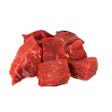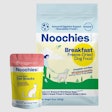
Apple cider vinegar has long been touted in human health circles, but its place in pet food remained largely uncharted, wrote Greg Aldrich, Ph.D., Kansas State University research associate professor, in his February 7, 2020 Petfood Industry column, “Apple cider vinegar: Natural ingredient for pet foods?” Apple cider vinegar has appeared in pet products, but scientists have yet to validate many of its claimed benefits. Its antimicrobial and metabolic effects may be promising, but without formal studies, it remains closer to folk remedy than established functional ingredient. While claims abound, the scientific foundation is thin.
Here are 10 takeaways from Aldrich’s column that help frame apple cider vinegar’s potential role in pet food.
1. Limited direct research in pets
Despite growing popularity, there are no peer-reviewed studies on apple cider vinegar in dog or cat diets. Most claims are anecdotal or extrapolated from human, rat, and poultry studies.
2. Broadly studied in humans and livestock
In other species, apple cider vinegar has been linked to obesity control, cholesterol and triglyceride metabolism, diabetes management, cardiovascular health, anti-inflammatory effects, stress reduction and antimicrobial activity.
3. Anecdotal claims in the pet space
Pet health websites list potential benefits such as improved digestion, nutrient absorption, reduced gastric distress, better colonic health, and even lawn care by reducing urine spots. Evidence, however, is largely lacking.
4. Ingredient profile and production
Apple cider vinegar is made by fermenting apple juice, first to alcohol and then to acetic acid. The process leaves behind “the mother,” a microbial culture. Typical acetic acid concentrations range from 3% to 5%.
5. Acetic acid: the active element
Acetic acid, a short-chain fatty acid, is central to apple cider vinegar’s function. It’s already part of normal animal metabolism and has been studied in dogs and cats for decades for its ketogenic effects.
6. Trace nutrients and bioactive compounds
While not a significant mineral source, apple cider vinegar contains polyphenolic acids, peptides, amino acids, and vitamins derived from apple skins and fermentation. These compounds likely provide any health-related value.
7. Ingredient forms for pet food
Apple cider vinegar can be added as a liquid or as a powder plated onto carriers like maltodextrins. Processing, however, may vaporize some acetic acid, limiting its impact.
8. Application levels and palatability
A Dutch study, Naoum et al. (2002), suggested acetic acid could reduce palatability at high inclusion rates. In practice, apple cider vinegar in pet food is more realistic at 1% to 5% of the formula.
9. Regulatory status
Apple cider vinegar itself is not listed by AAFCO, but acetic acid is generally recognized as safe (GRAS) in the U.S. and approved in the EU (E260) as a preservative across all animal species.
10. Most promising uses in pet food
If supported by research, apple cider vinegar’s greatest potential may be as an antimicrobial preservative, a tool for glucose control in diabetic pets, a weight management aid, or a urinary tract health support.

















